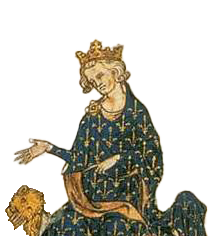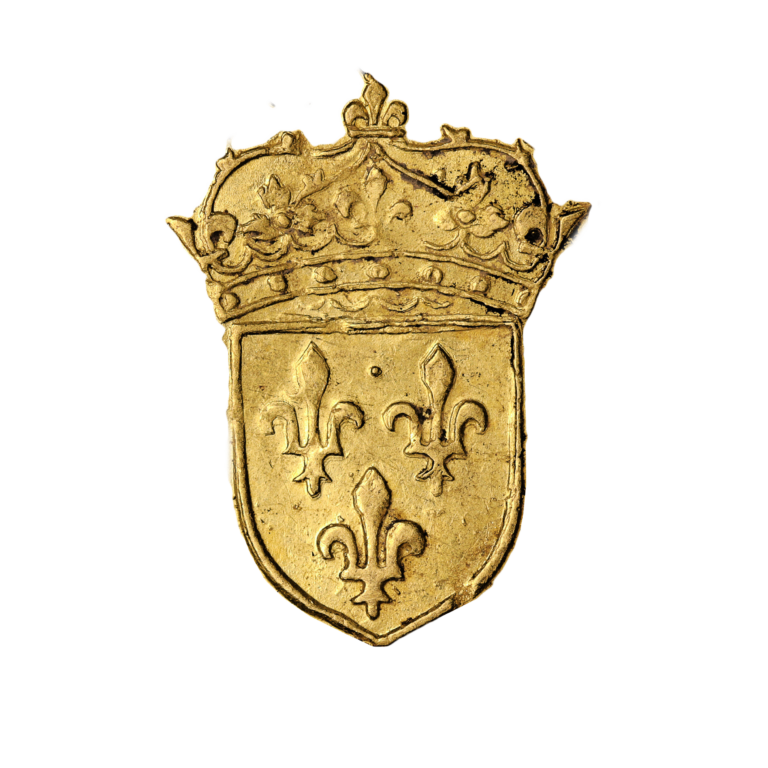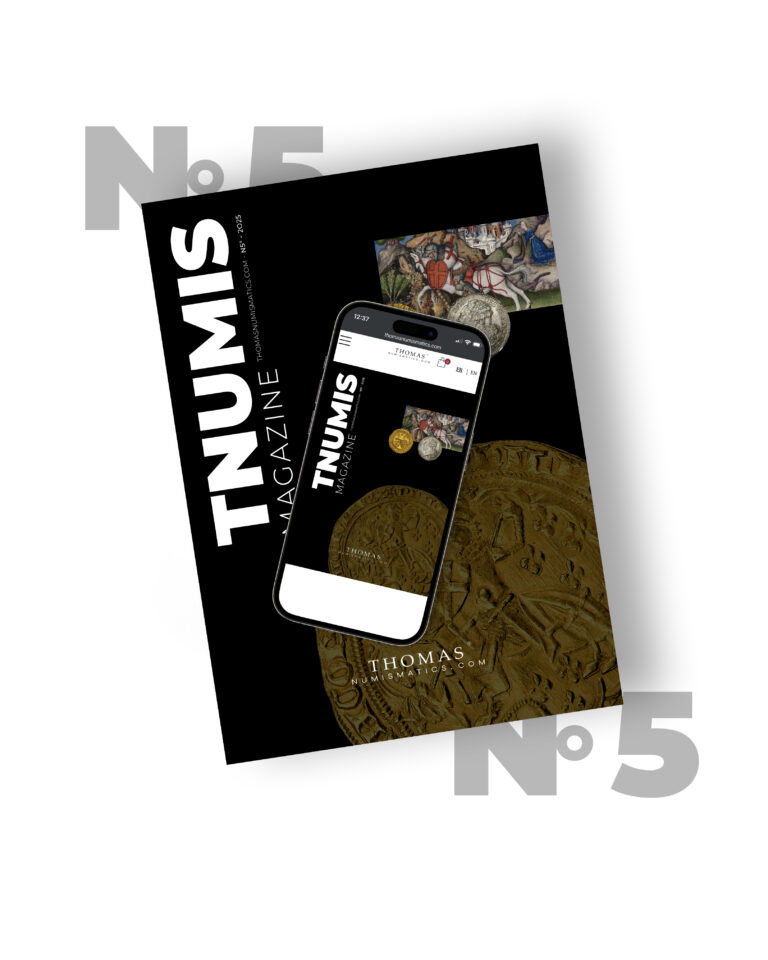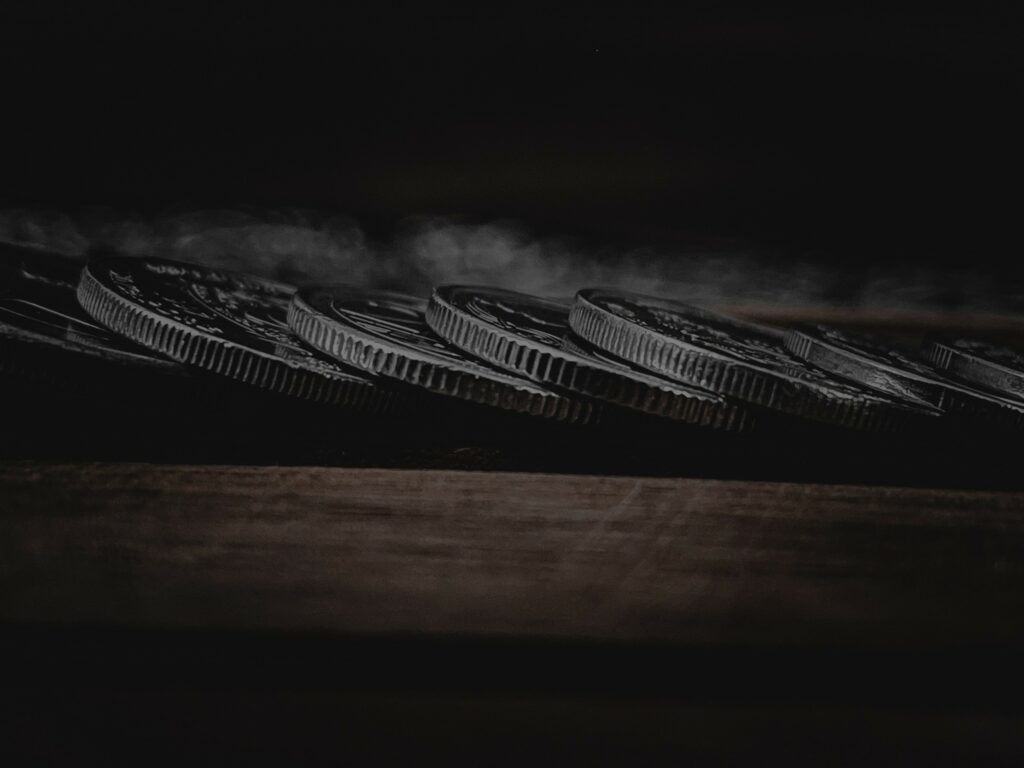
Discover all the news and articles from TNUMIS Magazine exclusively
The monuments on Roman coins
Numismatics is also a way to immerse yourself in history. Coins are often the witnesses of an era and the symbol of a country, a region, a city even. In Roman antiquity, coins were, among other things, stamped with the gods of mythology, protectors of the cities. The monuments on Roman coins were also favorite subjects. Some buildings have even completely disappeared and are known only through coins; which shows, once again, the power of numismatics. Let’s focus on a few pieces that attest Roman architecture.
The Columna Minucia
The first known monument on a Roman coin is the Columna Minucia. The denarius, minted in the years 135 BC, has on its obverse a helmeted head of Rome. On the reverse, the bronze ionic column is surrounded by two figures, probably Marcus Minucius Festus and Lucius Minucius Augurinus. This monument would have been built in honor of the latter. As a prefect in the 5th century BC, he had maintained the price of grain during a famine that had affected Rome.
The temple of Jupiter Capitolinus
The first temple of Jupiter was completed in 509 BC in the Capitol of Rome. This Tuscan-style monument subsisted until its destruction in 83 BC, but it was quickly rebuilt. One can find its representation on the back of a denarius of Marcus Volteius struck in 78 BC. The Volteii were members of a Roman family that is known today thanks to these coins. They had affixed this monument to commemorate an important event: the Ludi Romani or Magni. These celebrations honored the god Jupiter, who is represented on the obverse of this coin as a laurel head. Races, fights, shows and procession to the famous temple animated the month of September.
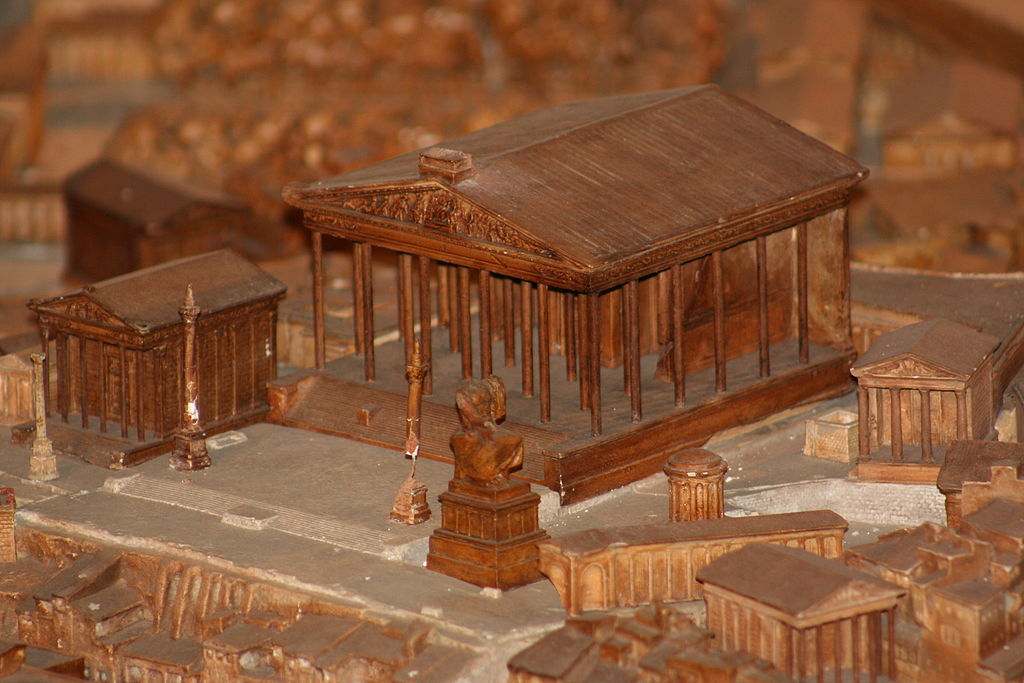
©Pascal Radigue, wikimédia
The Aqua Marcia aqueduct
Another monument of ancient Rome found on a Roman coin is the Aqua Marcia. On the reverse of the denarius of Lucius Marcius Philippus, minted in 56 BC, we see the equestrian statue of Quintus Marcius Rex resting on the aqueduct. On the obverse, the portrait of the Roman king Ancus Marcius, who had brought water to Rome in the 7th century BC.
The inscription AQUAMAR (there are variations) confirms that the building represented is indeed the Marcia aqueduct. It had been built by Quintus Marcius Rex in 144 BC, and had to bring drinking water to the city of Rome. His equestrian statue was installed on the bridge in his honor. The work of art cost 8,400,000 sesterces, it was 37.48 m high and ran for a little more than 91 kilometers.
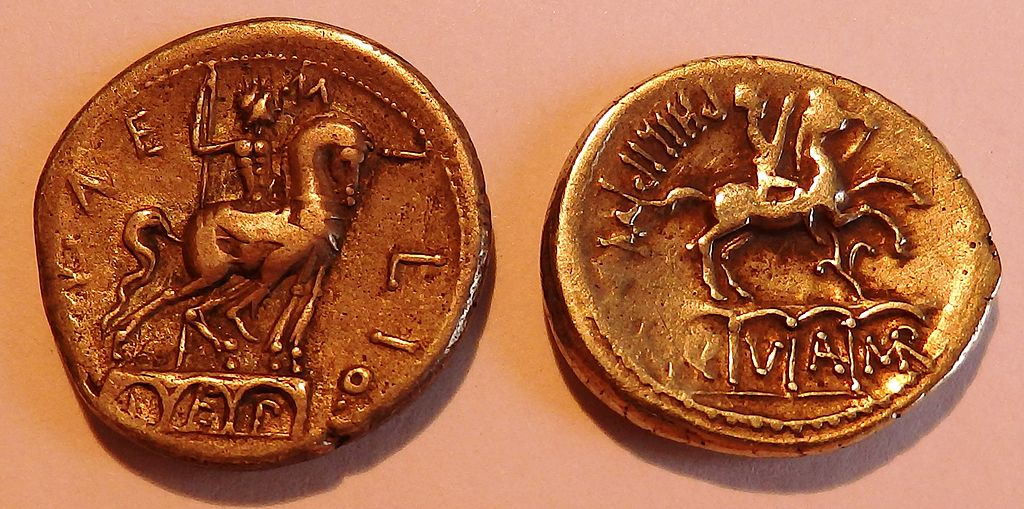
The temple of Vesta
The ruins of the Roman temple intended for Vesta are still visible today in the forum of Rome. It was built during the reign of Numa Pompilius in the seventh century BC, it was destroyed several times and during the fire of Rome in 64 under Nero. It was definitely rebuilt in marble at the end of the 2nd century.
It is found on a denarius of Quintus Cassius Longinus of 55 BC. Its reverse refers to the trial of the three Vestals led by Lucius Cassius Longinus Ravilla in 113 BC. The round temple housed the sacred fire as well as precious objects kept secret. The inhabitants of Rome believed in its power and the extinction of the flame announced bad omens.
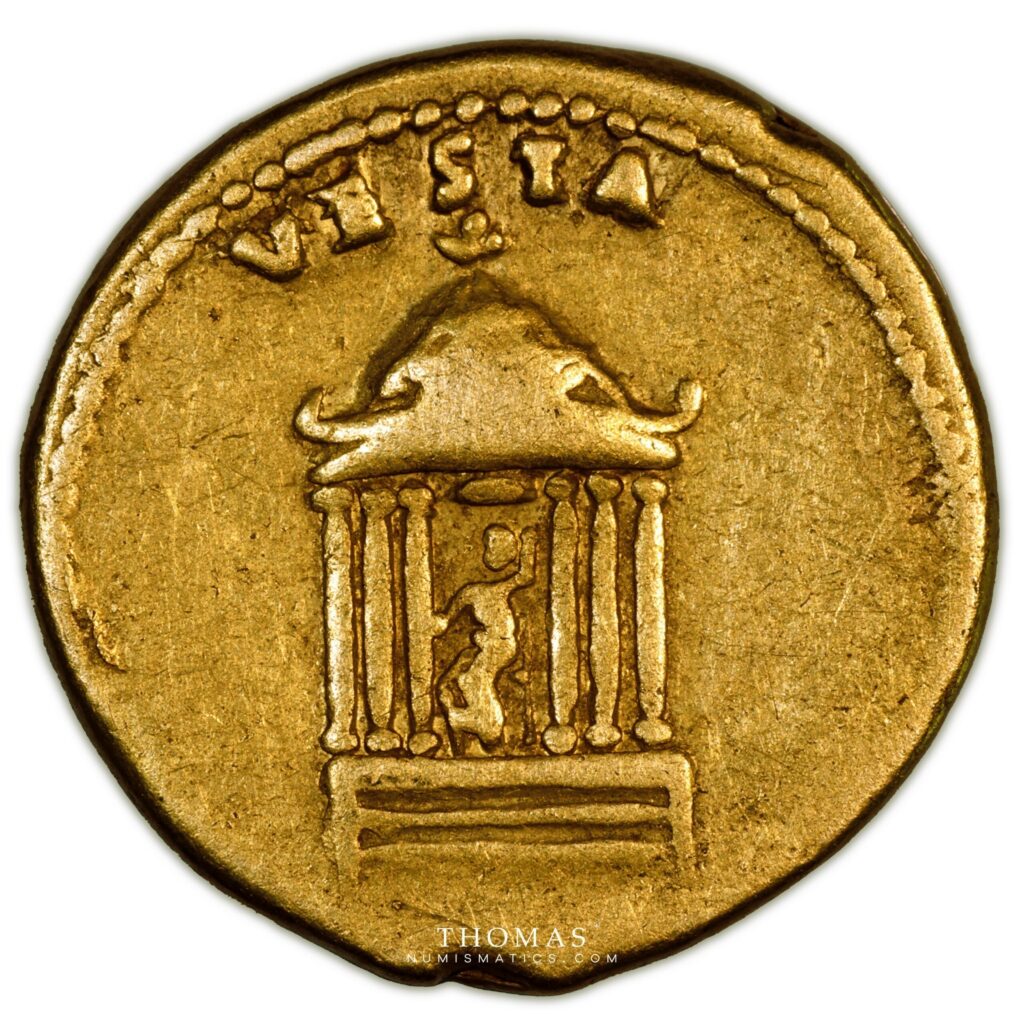
The Coliseum
The Coliseum is, undoubtedly, one of the Roman temples most represented on coins.
The first known coin is a bronze sesterce dating from the reign of Titus, in the 1980s. Hundreds of heads can be seen in the Coliseum. At the time, the architectural structure is already precisely designed.
150 years later, the Coliseum was struck again during the reign of Alexander Severus, on gold, silver and bronze coins. The details are always impressive and there are differences between the coins (number of arches, single-story portico, etc.).
Under Gordian III, the Coliseum appears on a commemorative medallion around 240 AD. The scene becomes more moving. The emperor observes the spectacle: a bull confronts an elephant, driven by a man.
The Coliseum has always been an emblematic Roman monument. In fact, on the face of the Italian 5 cent euro coins, the mythical Coliseum still stands.
The temple of Janus
The temple of Janus was a Roman monument that stood at the foot of the Argiletum, near the forum. It is the oldest temple dedicated to the god Janus, which has today disappeared. Nevertheless, one knows it was of rectangular shape, thanks to its representation on a sesterce dating from the reign of the emperor Nero. The architecture is detailed, with an entrance and a double door. The walls are square and decorated with garlands.
On the obverse, the laureate head of the emperor Nero is shown. On the reverse, the temple of Janus is represented with the doors closed. They were in this position in times of peace and opened in times of war, to release the powers of the deity and bring luck to Roman fighters.
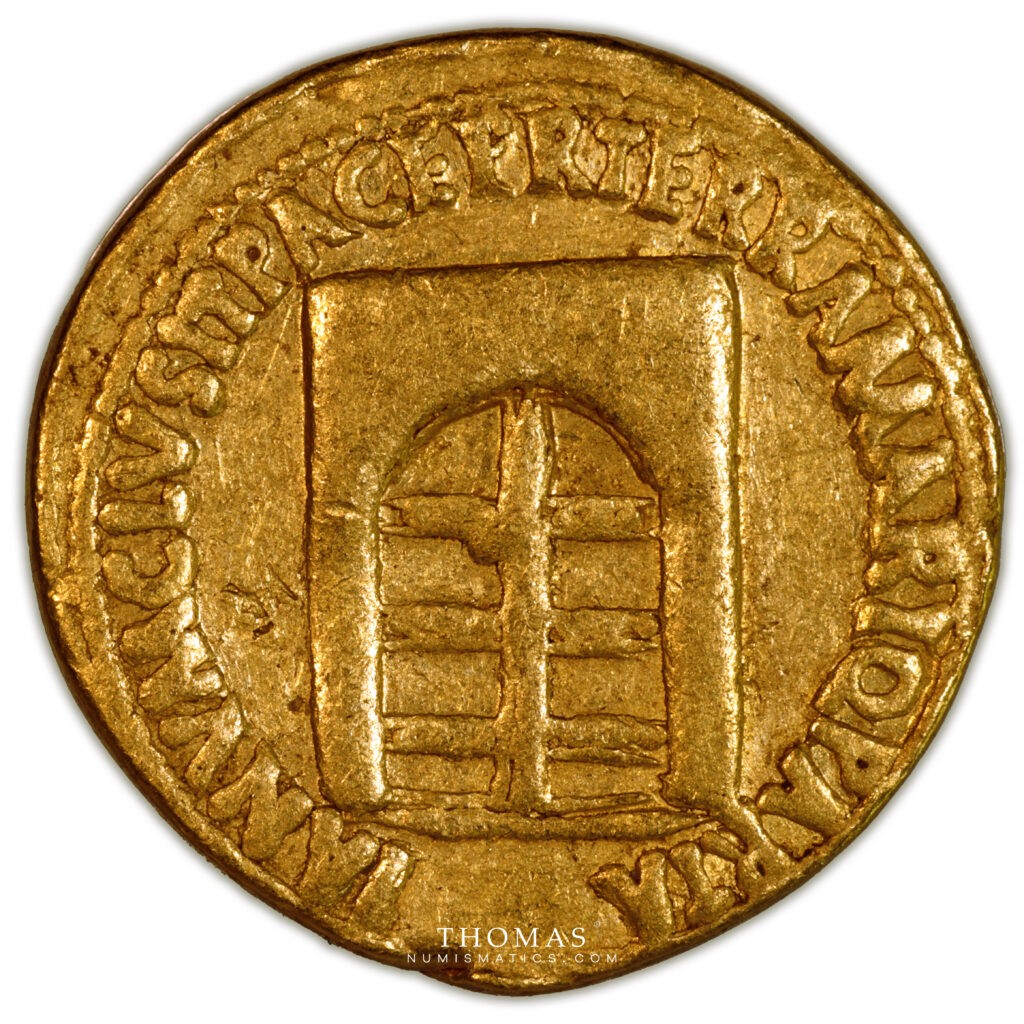
The Trajan column
On a silver denarius dating from 113-117 AD, the Trajan column is decorated with a statue of the emperor Trajan. This monument is a masterpiece of Roman art history. It was erected between 107 and 113 AD to commemorate the victories of the Roman Empire against the Dacians, an enemy people from the north. All around, a bas-relief is carved describing the different episodes of this war. On the base, the motto of the Roman Republic is inscribed, which is also found on the coin SPQR OPTIMO PRINCIPI. Nowadays, the column is still in place, but the statue of Trajan which was on top of it was replaced by the one of Saint Paul in the 16th century.
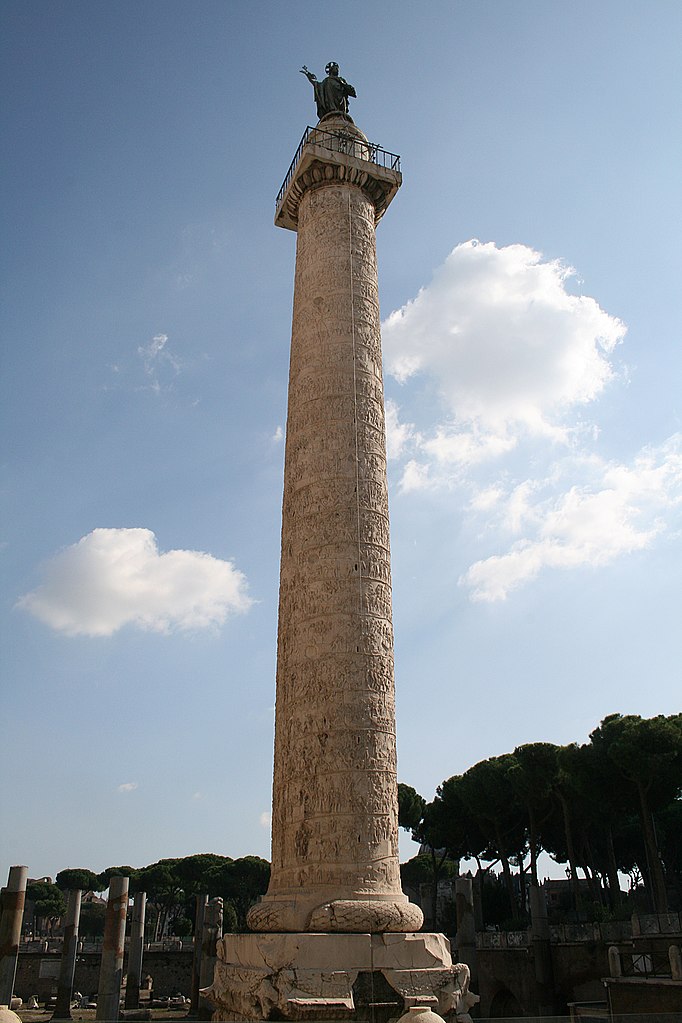
Do these Roman coins fascinate you? Find a prestigious selection in our shop.
Sources :
Quadrigatus
Les Dioscures
Wikipédia
The colosseum
BNF
Frederic Weber
